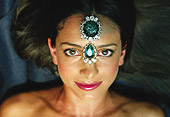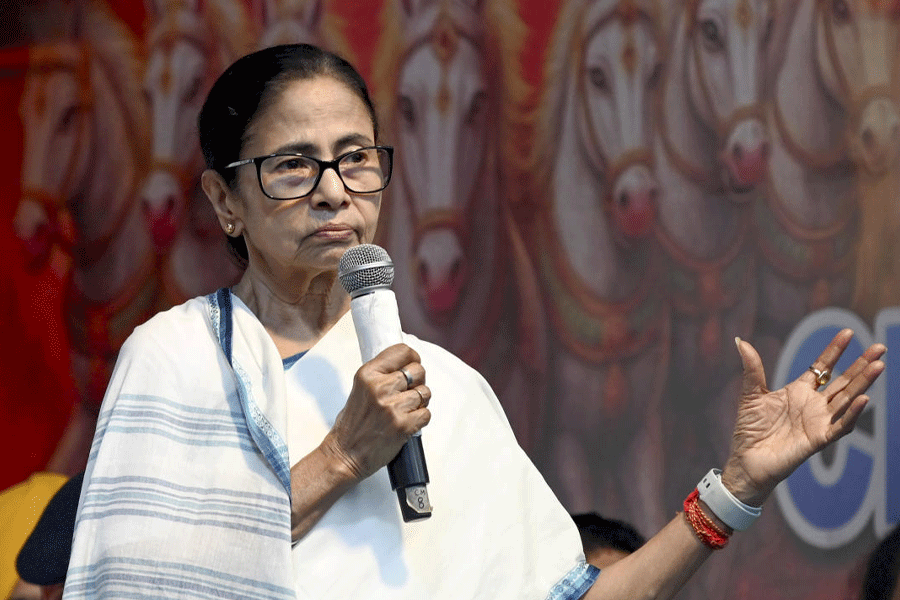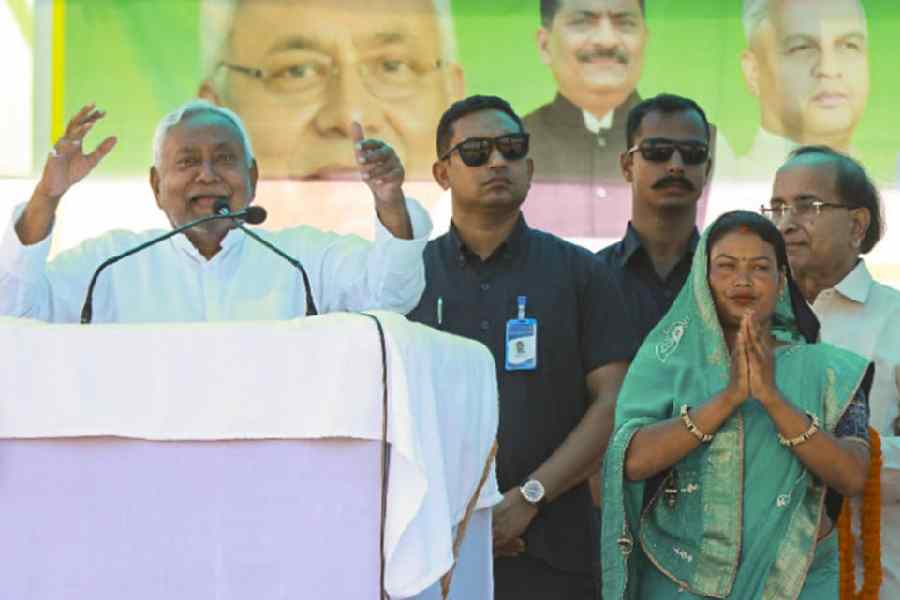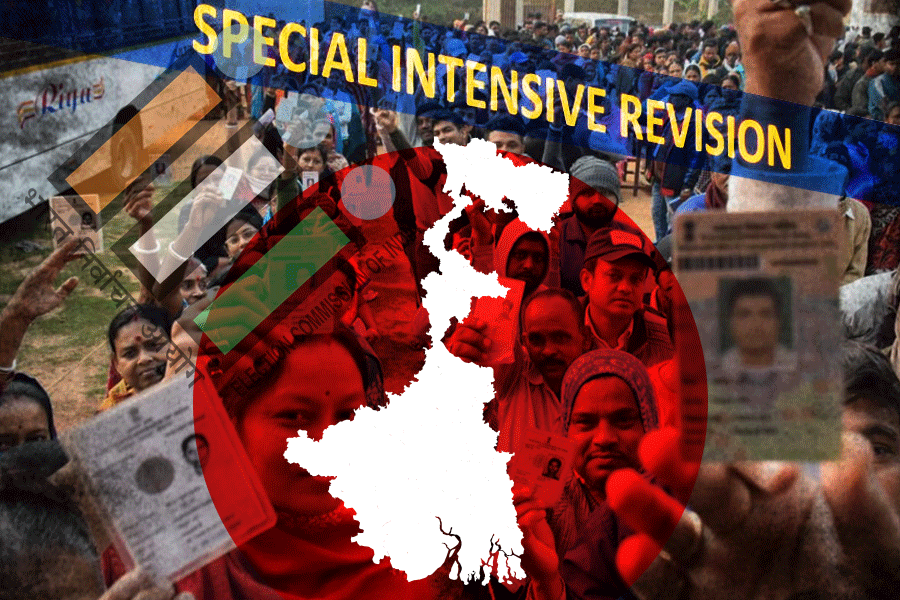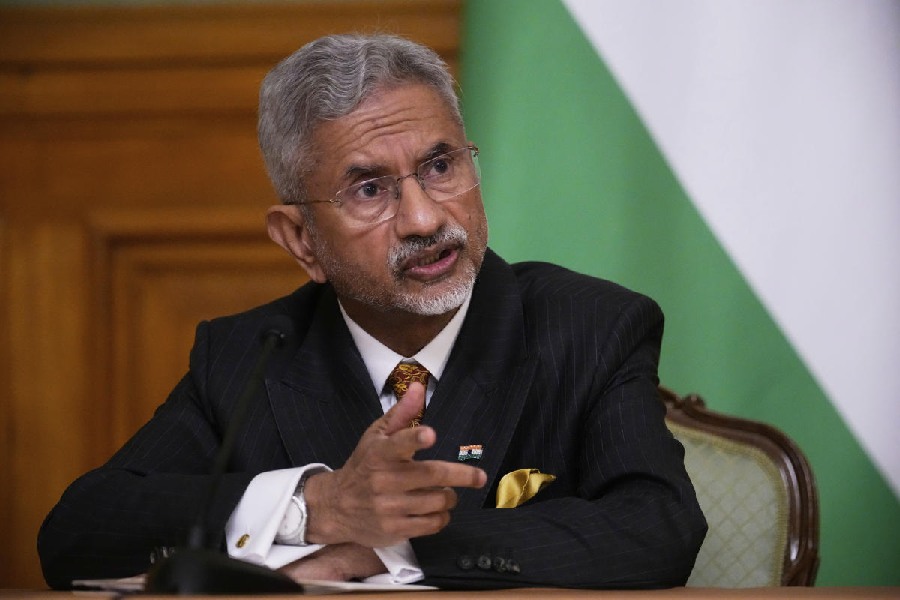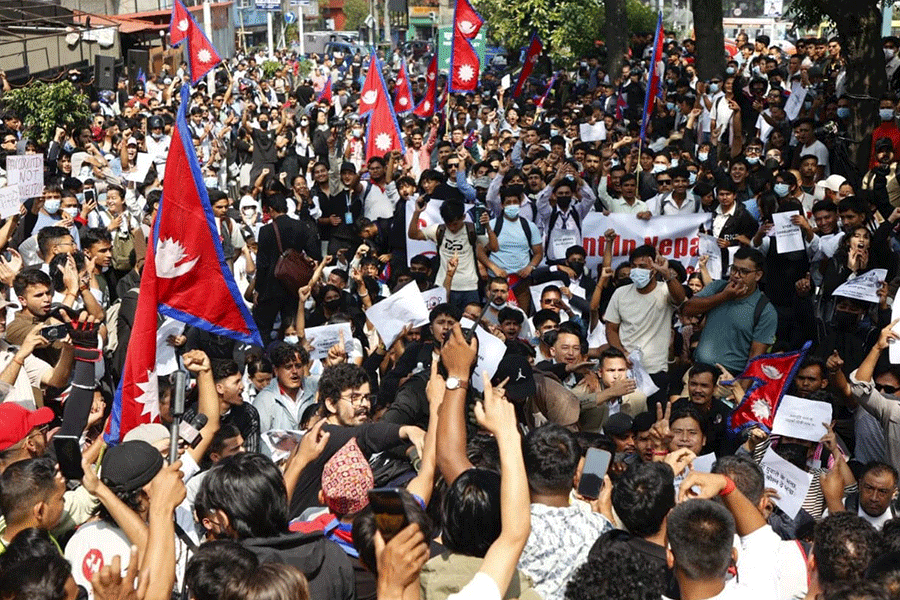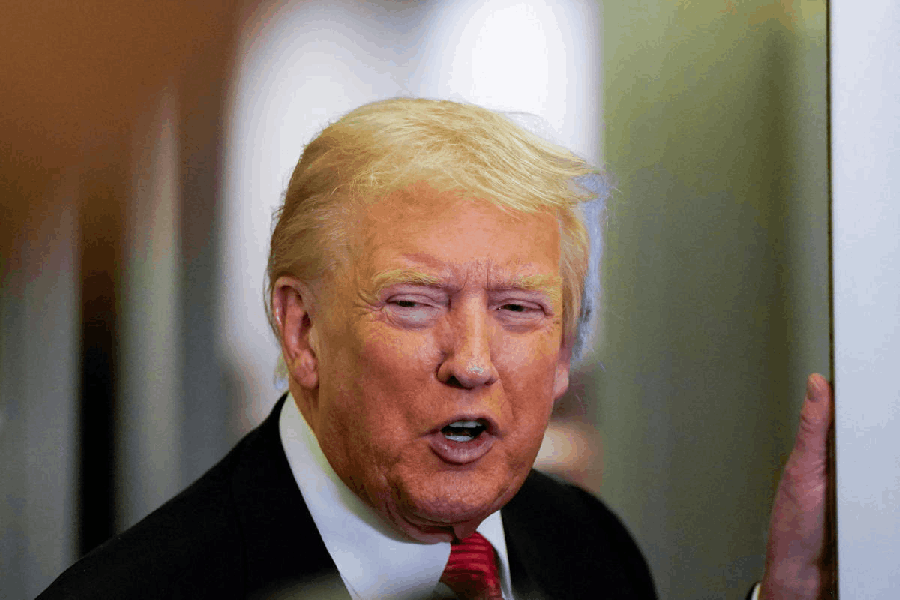 |
| RAZZLE DAZZLE: Zehra Naqvi who stars in the Broadway version of Bombay Dreams |
Newsweek has just anointed South Asians the “new American masala” but the signs, as the Oracle might say, were already there. A little South Asian girl looks down at a supine Keanu Reeves at the beginning of The Matrix Revolution. Tops that look like kurtis hang on the racks in department stores in the hip Soho neighbourhood of Manhattan. At a gym in San Francisco, young women kick their legs in an aerobics class as Punjabi MC belts out Mundiya te bach ke.
And now, the holiest of the Holy Grails: Bombay Dreams opens on Broadway on April 29. If this clicks, could it be the dawning of the Age of New Brown in America? In 1492 Columbus thought he had discovered the Indians. Now, after more than six centuries of waiting, we are truly discovered. “If Bombay Dreams is a success in the States, then we’ve crossed a huge milestone,” says actor Aasif Mandvi. “All the Indians in the New York-New Jersey area will be going to go see the show but it still has to cross over to a large non-Indian audience.”
Mandvi’s 1998 one-person play, Sakina’s Restaurant, got rave reviews and helped land him the title role in Ismail Merchant’s The Mystic Masseur, but Sakina was hardly a financial success. Sakina played in a 250-seat theatre, Bombay Dreams will play for 1750 people every night. Advance tickets worth $3 million were sold within the first two days of the box office opening. Ultimately, that’s the currency of cool. “It will last as long as people buy it. Just follow the dollar,” says Mandvi.
Some say America’s Indian embrace started back home with India opening its markets to the multinationals. But the numbers here helped. According to the 2000 census, the desi population in the US doubled in ten years to 2.18 million.
We were the model citizens — winning spelling bees, writing reams of code and buying responsible cars like Hondas and Toyotas. We had money, motels, and a lobbying firm in Washington. But we were never cool. Suddenly we are the stuff that dreams are made of. We came here in search of the American dream. Now, we are in it. When Bombay Dreams opens it will mark the first time an Indian, Sudhir Vaishnav, has actually produced a big budget show on Broadway.
When I first landed as a grad student in the United States at the end of the Eighties, my little university town in Illinois was bursting with desi grad students but there were no all-you-can-eat lunch buffets that now dot Silicon Valley. One “international” store for all your basic spices but if you wanted panchphoran forget it. Now you can go to a supermarket in Sunnyvale in the heart of Silicon Valley at 8 pm and get your Neem toothpaste and hing. Ads for a desi grocery store in the programme brochure of a Vijay Tendulkar play in a suburb of Boston offer “baby goat meat” and “frozen fish from Bangladesh”.
The thousands of young engineers with H1-B visas missing mom’s home cooking did it. Indian restaurants started popping up here, there, everywhere. San Francisco’s rundown Tenderloin, once home to hole-in-the-wall bars and seedy massage parlours with flashing signs, started attracting so many dhaba-style Indian/Pakistani restaurants that the local newspaper dubbed it Tandoorloin.
The dot com bust hit the Indian population hard. “Many of those engineers might have gone back to India but they introduced their American co-workers to this food before they left. So the taste of India remains,” says Sohel Subedar who runs Mela, one of the oldest desi restaurants in the Tandoorloin.”
Food often is the immigrants’ first point of entry into America. “For most Americans, their first glimpse of Indian culture is at a restaurant,” explains Lisa Tsering, entertainment editor of India West, a widely circulated weekly on the West Coast.
But Bollywood is entering the American mainstream as well thanks perhaps to L’Oreal’s new face, Aishwarya Rai. At the University of Washington reports Tsering, Bollywood is part of a course on Media and Society in South Asia. The students are mostly non-Indians or the children of Indian immigrants trying to figure out the movies their parents are addicted to. “The door is definitely opening,” says Tsering. “(Gurinder Chadha’s) Bride and Prejudice (starring Rai) might be the one that really opens it.”
This year, the ritziest Oscar gala in San Francisco, a black tie affair hosted by the Academy of Friends, decided to go for a ‘Hollywood to Bollywood’ theme. For an event that’s always about a celebration of the movies, “Bollywood and the window it provides into Indian culture seemed a natural choice,” says the event’s publicity chair, T. J. Snyder. Part maharaja fantasy, part over-the-top Jungle Book, it came with palm readers, Bharatnatyam dancers, half-naked young men with henna tattoos on their rippling abs and white men in tuxes and bindis.
Renda Dabit of Hennagarden was in charge of bringing Bollywood to life at the gala. Dabit, a Palestinian-American, who also started one of the first Henna salons in the US, originally put on Indian-themed parties for big corporations with a lot of desi employees. “Bollywood still has plenty of juice left in it,” says Dabit who also offers other themes like Old West and Orient Express. “If it’s in New York, San Francisco and Los Angeles now, in five years it will be in Texas and Minneapolis.”
But others worry that this is just America’s latest fad like kung fu. “I love Bruce Lee,” says Anmol Chaddha, co-director of Yellow Apparel: When Coolie Becomes Cool, which dealt with commodification of Asian culture. “But what did it do for Asians’ economic and political power?” He points to the popularity of African-American culture from rap to hip hop and soul. “People want to see a black person on TV but don’ t necessarily want them next door,” says Chaddha.
Christine Wong says the popularity comes at a price. An associate editor with YO! Youth Outlook she remembers how at the height of kung fu mania, the Chinese-American Wong was constantly asked by classmates in her rural mostly white town if she knew Bruce Lee. But post Bruce Lee, she says Asians are still stuck playing roles with funny accents. “I hope their growing visibility in mass culture will allow South-Asian Americans to correct stereotypes and have a stronger voice in national dialogues on race,” writes Wong. “We don’t need any more grinning comic-relief sidekicks, over-done accents or ‘exotic’ hotties.”
It’s not just the entertainment industry. Birthday cards are reproducing old kitschy Indian matchbox covers. Lunch boxes sport Krishna or Ganesha. Tight body-hugging T-shirts say San Francisco in Devnagari script. The vinyl covers of rickshaws are being converted into 100-dollar tote bags for the fashionistas. “All things can be turned into lunch boxes and throw rugs,” cautions Aasif Mandvi. “It’s a way to get people to buy Indian culture, without actually having to understand it.”
The disconnect became pretty apparent after 9/11. One of the first victims of the post 9/11 backlash was a Sikh gas station owner in Arizona. Temples and mosques were vandalised. South Asians found themselves thrown off airplanes. Suspicious FBI agents in moon suits burst in on a Pakistani family trying to make biryani in Pennsylvania. A suspicious neighbour thought they were making bombs.
Now the latest fuss is over outsourcing. A business processing term has acquired moral character. So, when the weekly South Asian comic strip Badmash recreated the Simpsons as the Singhsons — a desi family where Lisa reads A Three Year Old’s Guide to Arranged Marriages and Bart says “Kiss my kachha,” — the National Hire American Citizens Society was not amused. It put it on its website calling it “The Simpson Family after Offshoring” and goes on to list a corporate hall of shame from Microsoft to Bank of America to Rockfish Seafood Grill.
“That’s not surprising. A bindi on Madonna may be cool but my mom wearing a bindi is still a ‘dothead’ and a target for discrimination,” says Anmol Chaddha. “Our lives as South-Asians are not improved because white Americans can go to malls and try on bindis. They, after all, can take them off when they are not convenient.”
The danger of cool is also that we can be chewed up and spat out as millions of cookie-cutter lunch boxes with images of Krishna. Probably made in China! There have already been missteps. American Eagle put Lord Ganesh on slippers. Gold Medal Hosiery Company put Om on socks. Images of gods showing up on toilet seats, and rock icon Tina Turner being tapped to play Kali/Durga/Shakti have enraged Indian organisations.
“Of course people don’t have a lot of information about India,” admits Dabit of Hennagarden. “So if they want to use images of gods we have to say would you use an image of Jesus Christ there?”
Whether this shade of brown will last into next season or be replaced by the next flavour of the day remains to be seen. For now, NBC television is putting together the pilot for a new television sitcom executive produced by David Sch-wimmer of Friends fame. The series is supposed to star Kal Penn from American Desi and is set to hit American prime time in September 2004.
This series, Never Mind Nirvana, is about the Mehtas and their faithful family retainer, Govind Singh. The casting call reflected America’s never-ending Columbus-induced cowboy confusion about how to classify Indians as it looked for East Indians and East Indian accents. But that’s just quibbling — Broadway and prime time in the same year! Let’s uncork the Karma Cola!

